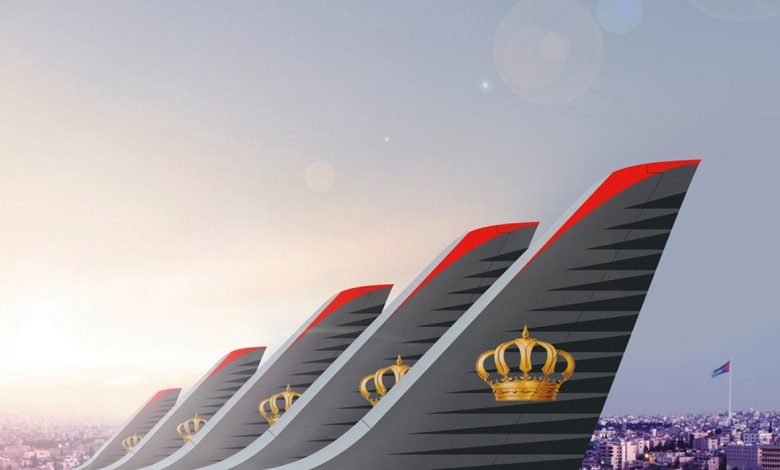
By : Nedal Zubeidi
Jordan Daily – Royal Jordanian Airlines (RJ), Jordan’s national carrier, has long been a pillar of the country’s economy and a symbol of its modernity. Despite financial challenges, Royal Jordanian is actively pursuing strategies to ensure a stronger and more sustainable future.
The Israeli war on Gaza has certainly had a profound impact on regional stability, with aviation and tourism industries being some of the hardest hit. As Samer Majali, Royal Jordanian’s CEO, acknowledged, these sectors are “the biggest victims” of the conflict, but attributing the airline’s woes solely to geopolitical tensions misses the bigger picture.
Royal Jordanian’s net loss of JOD 1.81 million in the first nine months of 2024, a dramatic reversal from its profitable 2023, is more than just a consequence of external factors. The airline has been navigating a complex web of challenges for years. These include rising operational costs, an aging fleet, and stiff competition from both regional and low-cost carriers. While the Israeli aggression undoubtedly exacerbates these issues, the airline’s troubles run deeper and require more than just a return to stability in the region to overcome.
One of the most significant pressures on Royal Jordanian is the shifting dynamics of global air travel. The airline has had to reroute flights due to airspace closures in the wake of the Gaza war and the Israeli strikes on Lebanon, leading to increased fuel costs and longer journey times. This is just the latest in a series of logistical challenges that have placed a heavy financial burden on the airline. As Majali himself pointed out, the sudden closure of airspaces and longer routes “imposed an additional burden.”
But the situation is more than just reactive measures to a conflict. In the highly competitive Middle Eastern aviation market, Royal Jordanian faces a daunting challenge: other regional airlines, such as Emirates and Qatar Airways, have state-backed financial support, allowing them to weather the storm far more easily. Meanwhile, low-cost carriers like Flydubai and Air Arabia attract cost-conscious travelers, eating into Royal Jordanian’s market share.

While Majali has outlined a fleet modernization plan, including the replacement of 15 older planes with new models and the addition of five aircraft to its fleet, such efforts will take time and, crucially, money- resources that are currently stretched thin. The capital restructuring plan, which involves writing off reserves and reducing the company’s capital, is a short-term fix, but the airline needs a long-term strategy for sustainable growth.
At the same time, the airline is grappling with high fuel taxes and the monopolistic pricing of Jordan’s refinery. Unlike its competitors, Royal Jordanian doesn’t have the flexibility to shop around for lower fuel prices. These challenges are compounded by the fact that most of its rivals benefit from government subsidies that keep their operational costs lower, further squeezing Royal Jordanian’s ability to compete on price.
Fuel costs represent another major challenge. Majali noted that 40% of the airline’s costs are consumed by fuel, with maintenance accounting for 25%, while aircraft leasing and purchase costs make up 18%, and employee salaries represent 13%.
The airline’s problems are not isolated from Jordan’s broader economic landscape. With Royal Jordanian contributing to over 31,000 jobs and aspiring to reach 55,000 by 2028, its health is crucial to the national economy. Majali’s ambitious plans for the airline include reaching 60 destinations and boosting its contribution to Jordan’s GDP to 4.3% by 2028. But how realistic are these goals in the face of regional instability, rising costs, and intense competition?
There is no doubt that Royal Jordanian has worked hard to adapt to a difficult market. It has opened new routes, and has made significant efforts to reduce costs. However, the external pressures on the airline are unlikely to abate anytime soon. The Israeli war shows no signs of a swift resolution, and even when it does, the economic fallout will likely linger well into 2025, as Majali himself has predicted.
Royal Jordanian’s path forward will require more than just operational tweak.It needs a comprehensive strategy that addresses its structural disadvantages, thing the company is currently working on. This includes not only modernizing its fleet but also renegotiating fuel supply contracts, lobbying for more favorable regulatory conditions, and finding ways to compete with the massive state-backed carriers that dominate the region.
The airline also needs to rethink its role in the post-pandemic world, where business travel has declined, and leisure travelers are more price-sensitive than ever. Simply adding new routes or planes will not be enough if the airline cannot capture a greater share of this evolving market.
In Majali’s own words, Royal Jordanian is constantly seeking solutions to ensure its profitability and growth, but many of these solutions lie beyond the company’s direct control. The airline is constrained by factors with RJ is the captive customer of the Queen Alia International Airport (QAIA) and fuel supply, as well as the broader economic challenges facing the country.

